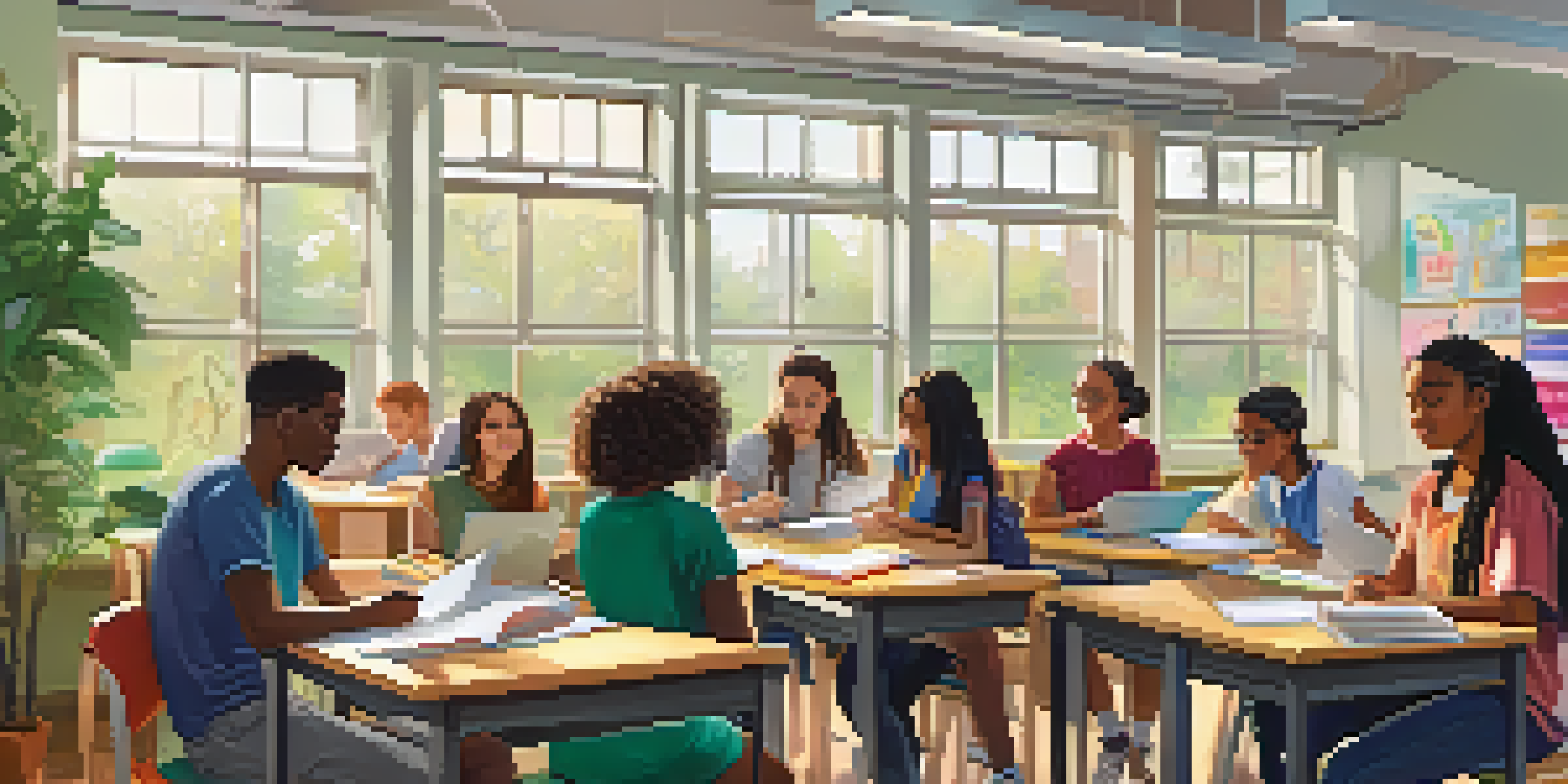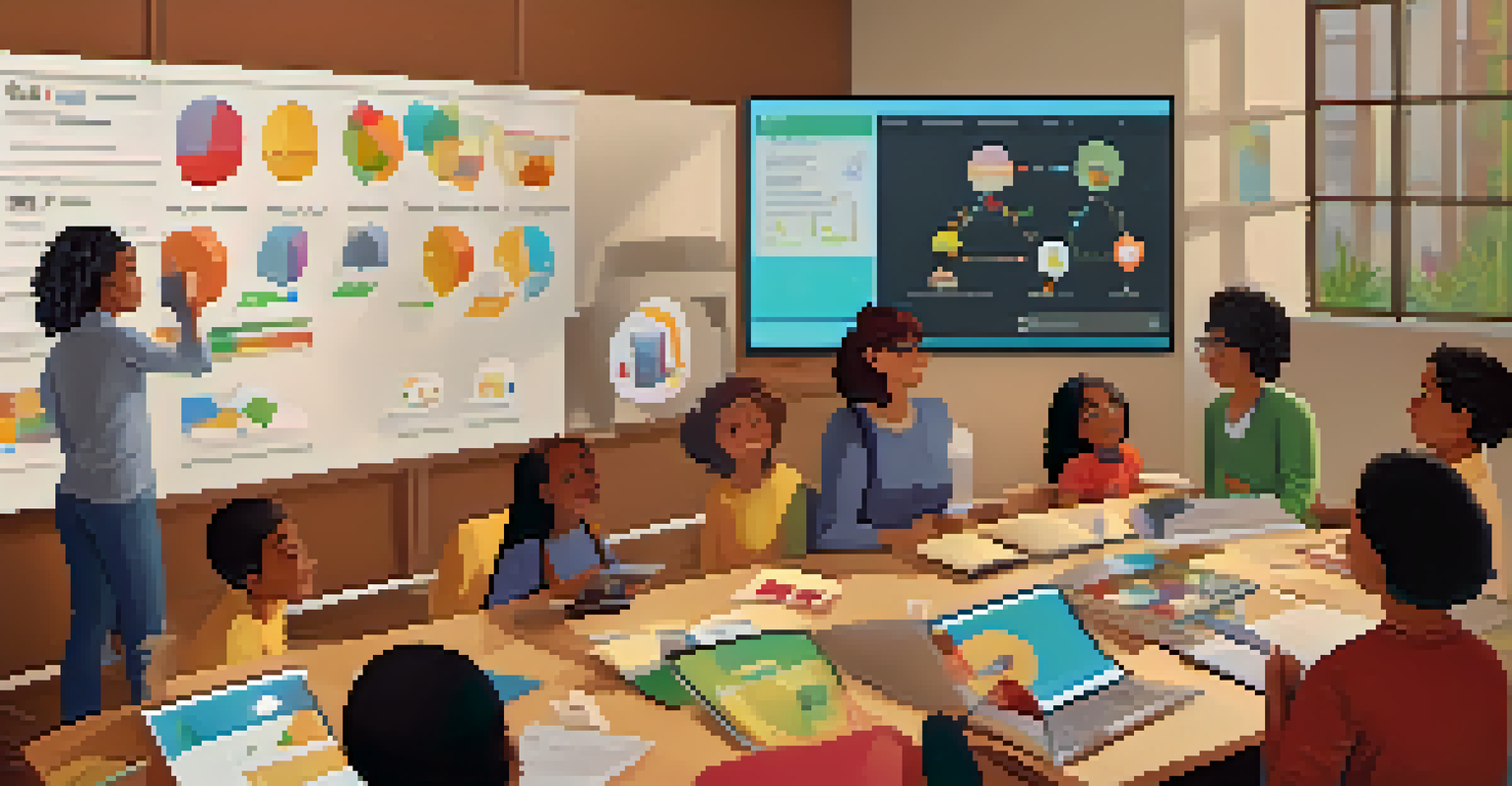Reflective Practices for Educators in Student-Centered Learning

Understanding Student-Centered Learning
Student-centered learning puts the learner at the heart of the educational process. This approach encourages students to take ownership of their learning, promoting engagement and motivation. In this environment, educators act as facilitators rather than traditional instructors, guiding students to explore, inquire, and collaborate.
Education is not the filling of a pail, but the lighting of a fire.
By focusing on individual needs, preferences, and interests, student-centered learning fosters deeper understanding and retention of knowledge. It’s like a journey where each student navigates their own path, discovering unique insights along the way. This shift in perspective requires educators to adapt their teaching strategies to support diverse learning styles and paces.
Reflective practices play a crucial role in this approach, helping educators evaluate their methods and make informed adjustments. By regularly reflecting on their experiences, teachers can enhance their effectiveness and create a more dynamic learning environment.
The Importance of Reflection in Teaching
Reflection is a powerful tool for educators, providing an opportunity to assess what works and what doesn’t in their teaching practice. It’s akin to looking in a mirror; it allows teachers to see their strengths and weaknesses clearly. By engaging in this process, educators can cultivate a deeper understanding of their impact on student learning.

Through reflection, teachers can identify patterns in student behavior and learning outcomes, leading to more tailored instructional strategies. This ongoing inquiry not only benefits students but also fosters a culture of continuous improvement within educational settings. Think of it as a feedback loop that enhances both teaching and learning.
Embrace Student-Centered Learning
This approach empowers students to take ownership of their education, fostering engagement and motivation.
Moreover, reflective practices encourage educators to embrace vulnerability and openness, creating a supportive atmosphere for growth. This willingness to examine one’s own practices can lead to innovative teaching methods that resonate with students.
Types of Reflective Practices
There are various reflective practices that educators can implement to enhance their teaching effectiveness. Journaling is one popular method, allowing teachers to document their thoughts, experiences, and insights regularly. This written reflection can serve as a valuable resource for tracking progress and identifying areas for improvement.
We do not learn from experience... we learn from reflecting on experience.
Peer observation is another effective practice, enabling educators to learn from each other’s experiences. By observing colleagues in action, teachers can gain new perspectives on teaching strategies and classroom management techniques. It’s like having a mentor right next door, providing real-time feedback and encouragement.
Lastly, engaging in professional learning communities (PLCs) fosters collaborative reflection. These groups allow educators to share experiences, challenges, and successes, creating a supportive network for growth. Together, they can brainstorm solutions to common issues, leading to enhanced student-centered learning.
Creating a Reflective Mindset
Cultivating a reflective mindset starts with self-awareness and a willingness to grow. Educators should carve out time in their busy schedules to reflect on their practices actively. It’s essential to approach this process with an open heart and mind, ready to embrace feedback and learn from mistakes.
Setting specific goals for reflection can also enhance this practice. For instance, educators might focus on a particular lesson or unit, analyzing what went well and what could be improved. This targeted reflection allows for deeper insights and more actionable outcomes.
Reflection Enhances Teaching
Regular reflective practices allow educators to assess their effectiveness and adapt strategies to meet student needs.
Additionally, maintaining a positive attitude towards reflection is crucial. Viewing challenges as opportunities for growth can transform setbacks into powerful learning experiences, ultimately leading to more effective teaching.
Integrating Student Feedback
Incorporating student feedback into reflective practices is invaluable for educators striving to enhance student-centered learning. Students can provide unique insights into their learning experiences, highlighting areas that resonate with them or suggesting improvements. This feedback can come through surveys, informal discussions, or even classroom exit tickets.
By actively seeking and valuing student input, educators create a collaborative environment that empowers learners. It sends a message that their voices matter and that their feedback can shape their educational journey. Think of it as co-creating the learning experience, where both teachers and students contribute to the process.
Moreover, analyzing student feedback helps educators identify trends and make data-driven decisions. This continuous loop of reflection and adjustment ensures that teaching practices remain responsive to the needs of students, ultimately enhancing their learning outcomes.
Embracing Technology for Reflection
Technology offers innovative ways for educators to engage in reflective practices. Digital tools, such as blogs, online journals, or video recordings of lessons, can facilitate deeper reflection. These platforms allow teachers to document their thoughts and experiences in real-time, making it easier to revisit and analyze them later.
Additionally, educational apps and software can streamline the process of gathering student feedback, making it more efficient and accessible. By leveraging technology, educators can enhance their reflective practices while also modeling digital literacy for their students. It’s like having a personal assistant that helps organize and facilitate the reflection process.
Integrate Student Feedback
Valuing student input creates a collaborative learning environment that enhances educational outcomes.
Furthermore, online communities and forums provide opportunities for educators to share their reflections with a broader audience. This exchange of ideas can spark inspiration and innovation, fostering a culture of collaboration and continuous improvement in teaching.
The Impact of Reflection on Student Outcomes
Ultimately, engaging in reflective practices has a profound impact on student outcomes. When educators commit to reflecting on their teaching, they are better equipped to create engaging, responsive learning environments that cater to the diverse needs of their students. This focus on continuous improvement leads to higher levels of student engagement and achievement.
Additionally, reflective practices can foster a positive classroom culture where students feel valued and heard. When educators implement feedback and adjust their practices accordingly, students are more likely to feel a sense of belonging and investment in their learning. It’s a win-win situation that benefits everyone involved.

In conclusion, reflection is not just a task for educators; it is a cornerstone of effective teaching in a student-centered learning environment. By committing to ongoing reflection, educators can enhance their practices, leading to more meaningful learning experiences for their students.